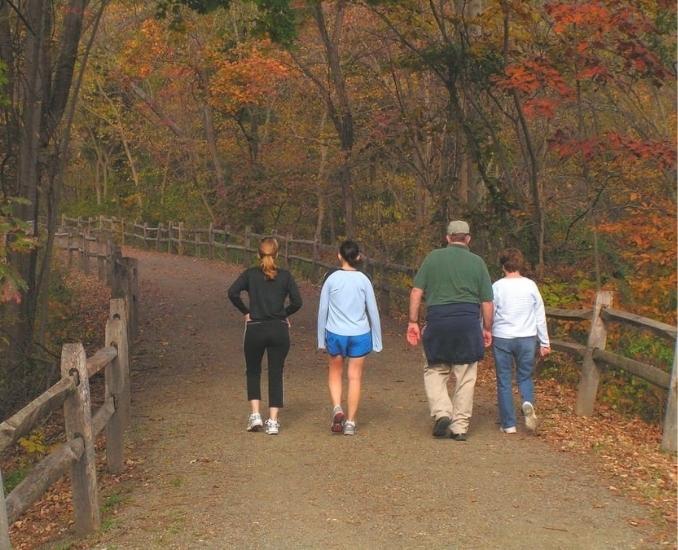
The swelling, stiffness and pain in the joints associated with arthritis can make exercise difficult. It can be discouraging to desire an active and fit lifestyle but feel that you are held back by pain and the fear of further joint damage. While these concerns are certainly rational, the good news is that exercising the right way can actually work to reduce the pain in arthritic joints. Let’s take a closer look at what causes the pain associated with arthritis so we can better understand the role exercise plays in reducing that pain.
Why Arthritis Hurts
Arthritis is classified as chronic pain because it is long-lasting and typically felt as a dull, burning or throbbing type of pain, although sharper aches are also common. The inflammation and tissue breakdown in the joints caused by arthritis is the main source of pain felt. Arthritis sufferers also tend to deal with stiffness, swelling and tenderness of the affected joints as well as overall fatigue.
Why Exercise Helps
Although completely understandable, it is actually a reluctance to stay active that can worsen the symptoms felt from arthritis. Stiffness, achiness and soreness can all be exacerbated by remaining sedentary for too long. According to Harvard Health, walking most days can actually ease arthritis pain and improve other symptoms of arthritis as well.
There are many reasons why improving your fitness can also improve your relief from arthritis symptoms. For one, exercising releases the body’s natural pain-reducing endorphins causing your neuroreceptors to block feelings of pain. This works similarly to morphine and other pain relief drugs. Regular exercises that work toward an improved range of motion in the joints, balance, aerobic endurance and muscle strength are best for aiding in reducing arthritis pain. By helping to maintain a healthy body weight, exercise also helps relieve undue stress on the joints. Finally, strengthening the muscles that surround the joints and improving flexibility in the joints makes exercise one of the key methods to diminishing the impact chronic pain has on the body by reducing the risk for injury and further joint damage.
What Exercises Are Best?
The Centers for Disease Control and Prevention (CDC) recommends a S.M.A.R.T. approach to exercise that improves arthritis symptoms and lowers risk of injury or additional pain. The “S” stands for “start low, go slow.” This means with any form of exercise you choose to participate in, start at a low-intensity level and slowly work your way up from there. “M” is for modifications. Always modify exercises that cause pain to work toward strengthening the muscles required to perform that exercise. Activities that are joint friendly satisfies the “A” in S.M.A.R.T. Simply put, choose activities that are low impact and provide a low risk of injury. The “R” stands for recognizing safe ways to begin your fitness regimen. For example, an instructed class or physical therapist might be the best way to learn how to exercise properly. Finally, “T” advises that you talk to a health care professional to ensure you are prepared for your new fitness journey. Once you’ve consulted a doctor, it’s time to get moving. The following exercises are generally considered safe and effective for those who suffer from arthritis pain to help achieve some relief.
Walking
A simple walk can be a great way to use exercise to improve your symptoms. Remember, staying still is the enemy of your joints. Try taking several brief walks throughout the day to loosen joints, warm up your muscles and release those all-important endorphins. Walking is also a weight-bearing exercise, which means you’re working toward improved bone and muscle strength with each walk you take.
Water Exercise
Water exercises like aerobics, water walking and swimming are staples for those who suffer from chronic joint pain. Because of the buoyant environment that water provides, most people can exercise at a higher intensity level with little to no stress felt on the joints. Water exercise provides resistance training as well as cardiovascular training, making it an ideal source for all-around pain-free fitness. Those who regularly participate in water exercise have been shown to have significant improvement in range of motion, joint pain relief and tend to maintain a healthier weight.
Strength Training
Appropriate amounts of strength training can not only improve symptoms of arthritis but actively work toward preventing the continued breakdown of the joints. Stronger muscles around the joints relieve the stress on the joint itself. In addition, strength training works to fortify bones, which is vitally important for those who suffer from osteoarthritis. Try starting with either small hand weights or resistance bands and focus on exercises that strengthen major muscle groups that function on joints like your quadriceps and hamstrings, biceps and triceps and calf muscles. Remember, strength training exercises can always be modified to not use weight or resistance at all as long as you focus on creating tension in your muscles.
Balance Exercises
Balance can be a big concern when joint pain and damage are risk factors in your everyday life. Simple exercises can be done daily to not only keep you active but work toward improving balance and reducing the risk of injury. Walking backward, balancing on one foot and tai chi are great balance-focused exercises that are joint-friendly.
Flexibility
Yoga or other forms of dynamic stretching are the perfect exercise choice for arthritic joints. According to the Mayo Clinic, these exercises relieve stiffness and increase your ability to move your joints through their full range of motion. Some simple ranges of motion to consider working on daily include movements like raising your arms over your head, rolling your shoulders forward and backward or bringing your knees in toward your chest. In most cases, these exercises can be done every day as long as injury or severe pain is not causing the affected joint to need rest.
Many forms of flexibility exercises also work to improve balance by strengthening the muscles in the joints required to hold various positions. Finding yoga or other exercise regimens designed to improve range of motion specifically for arthritis sufferers is a great place to start.
Conclusion
Although exercise can often be the last thing you want to do when pain and stiffness are striking your joints, remember that regular exercise is actually one of the proven methods for improving arthritis pain and relieving symptoms. Creating a healthy regimen of joint-friendly exercises can improve range of motion in the joints, build strength in the bones and muscles, and reduce the risk of continued joint damage. Exercise is a great way to reduce stress and relieve pain when done the right way for you and your body.
What we eat can have a massive impact on our joint health. For recipes to decrease arthritis joint pain, check out Cooking for Joint Health, here!




